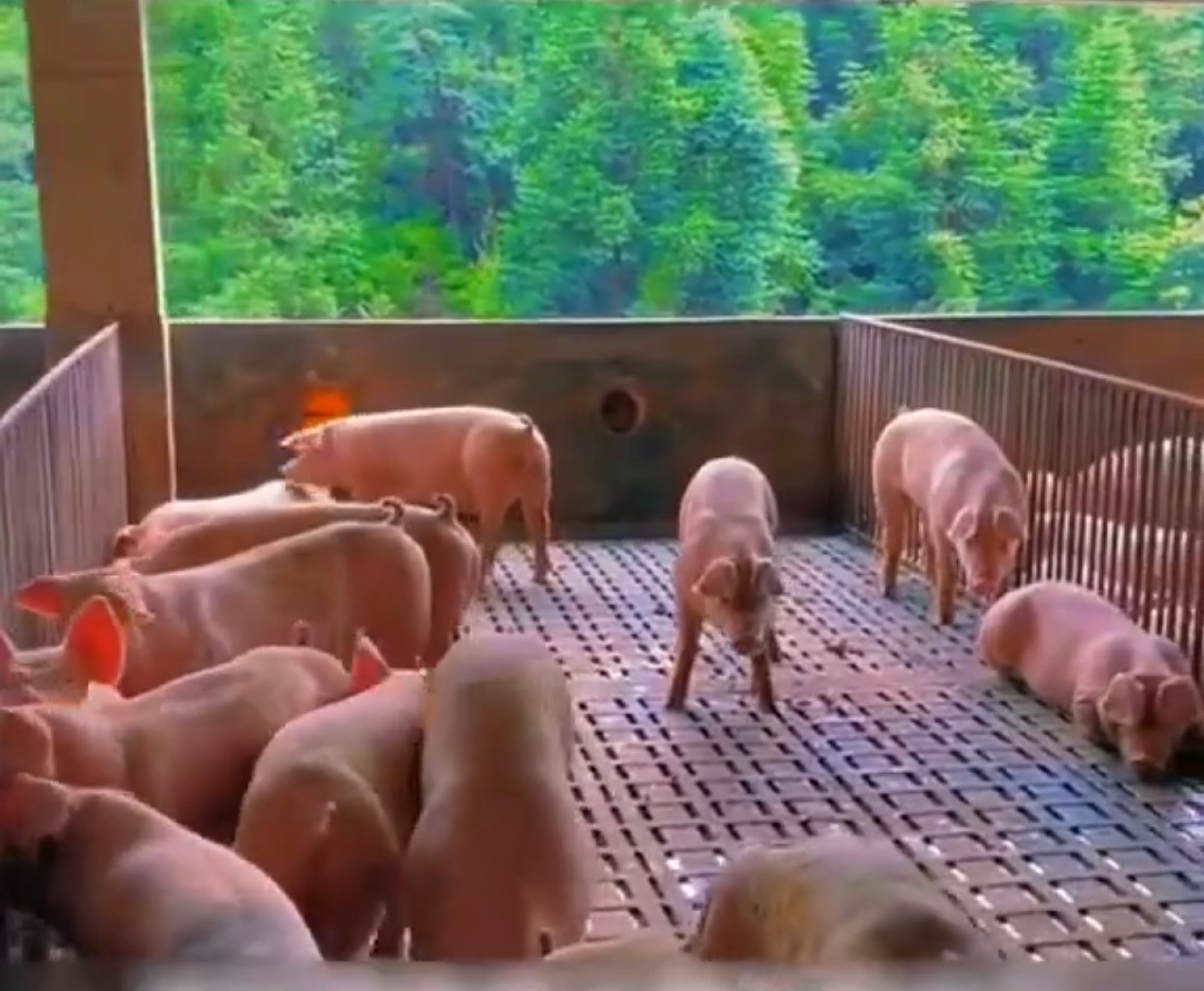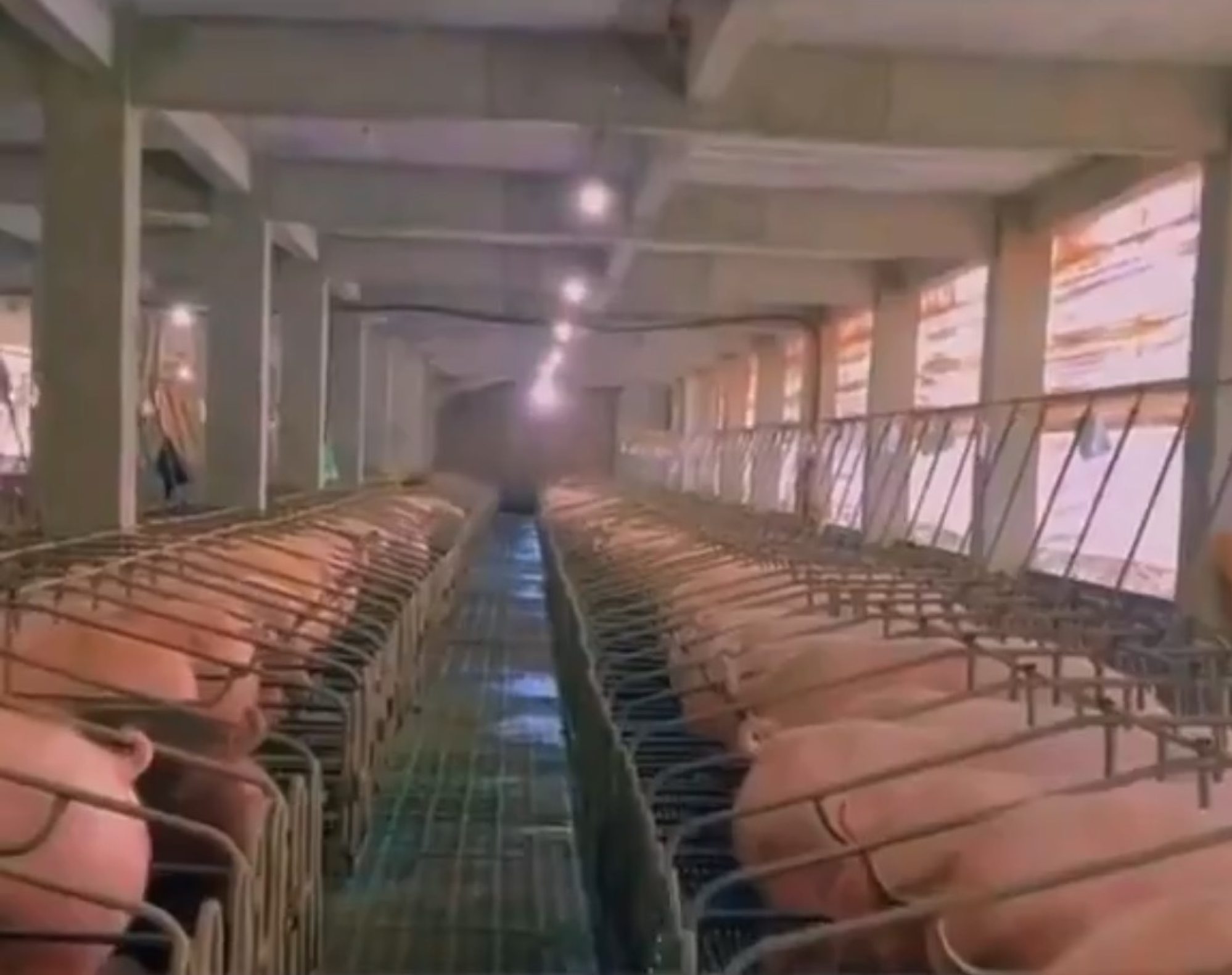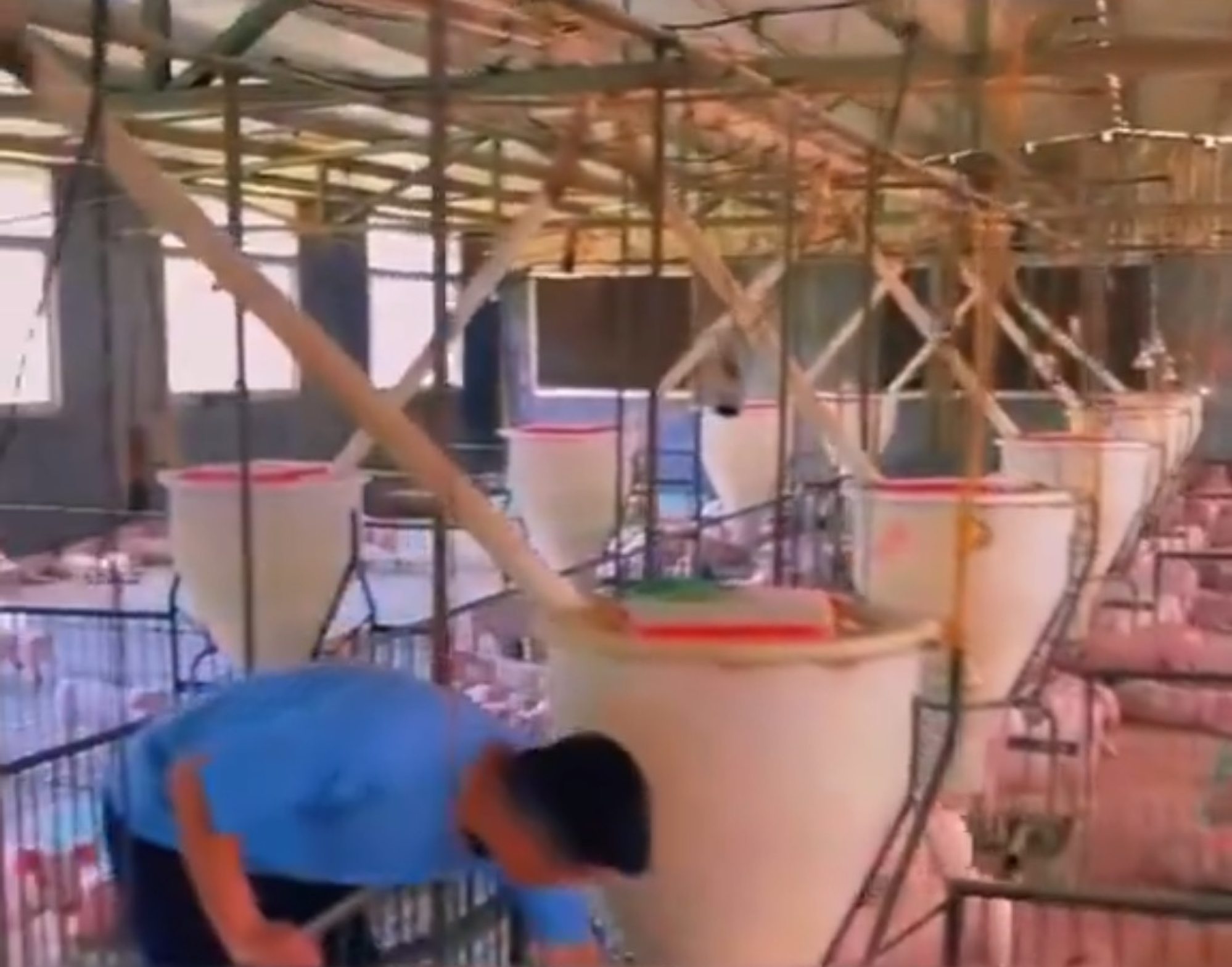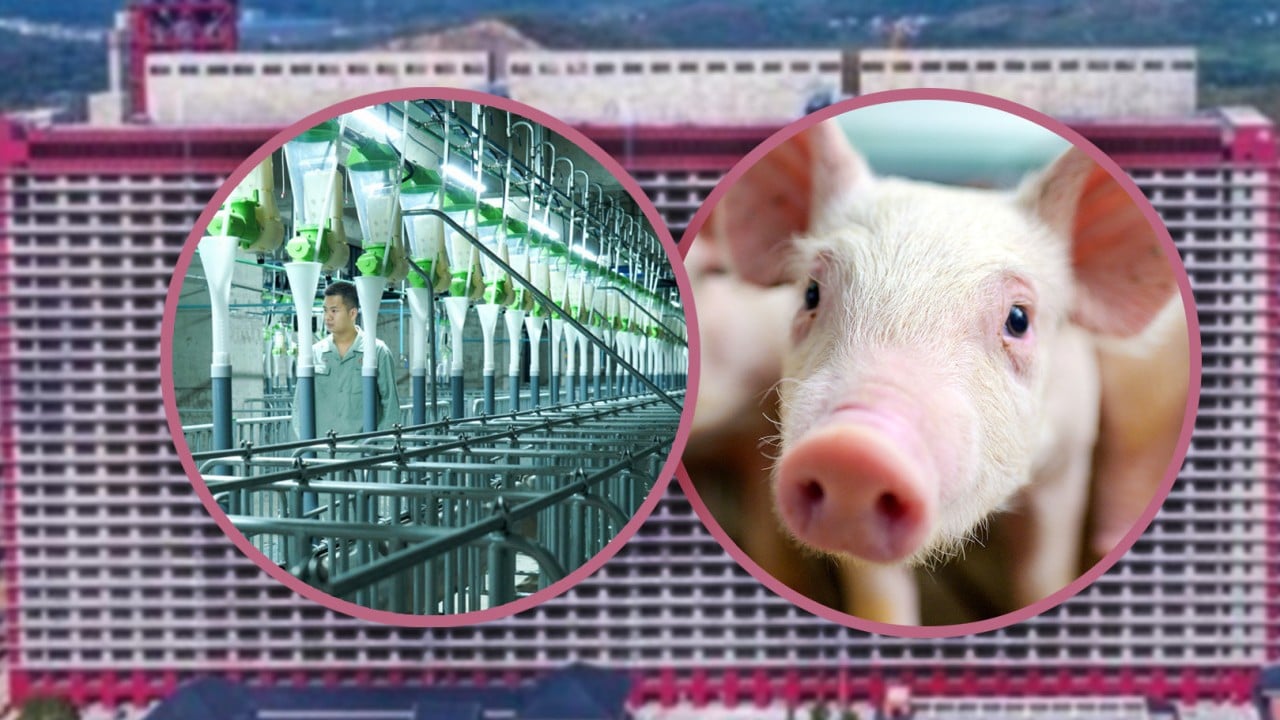While they are not quite of the flying variety, a high-living army of pigs in China is raising eyebrows at home and abroad.
The porkers are part of a vertical farming project involving two 26-storey skyscrapers in Ezhou, in the central province of Hubei.
Playing on the mythological character Zhu Bajie, also known as Monk Pig, from the classic Chinese novel Journey to the West, mainland social media has dubbed the skyscrapers Bajie Buildings, referring to the pigs as “the second elder brother living in a high-rise.”

From the outside, the high-rise blocks look no different from normal residential buildings.
However, instead of housing people, they are home to an industrial-scale vertical pig farming operation.
Jin Lin, general manager of the farm, which was built by Hubei Zhongxin Kaiwei Modern Husbandry, told Global Times that each building has a floor area of 390,000 square metres and together they can produce 1.2 million pigs a year.
The operation employs more than 800 people, meaning each member of staff is responsible for approximately 1,500 high-living hogs.
Operations began in September 2022 when the first batch of sows was introduced.
The animals were divided into groups and transported to their designated floors using elevators, initiating their life cycle within the skyscrapers.

The cycle begins in the gestation area, moves to the farrowing area where the pigs give birth, then progresses to a nursery 23 days after their birth.
The whole process concludes in a raising area where the pigs are raised for six to eight months until they are ready for the market.
Food for the animals is transported to the rooftop via conveyor belt and then distributed floor-by-floor using a fully enclosed system.
The sophisticated setup ensures the pigs are bathed daily and fed precisely based on their weight, breed and market demands.
It also provides a dedicated waste recycling system that helps mitigate the odour problems and environmental pollution typical of traditional rural pig farms.
Zhuge Wenda, chairman of Hubei Zhongxin Kaiwei Modern Husbandry, said that traditional pig farming in rural China often forces pigs to eat, drink and sleep in confined areas, making them dirty.
Vertical pig farming solves the problem.
“Pigs are inherently clean animals. Each floor of the building is divided into various functional areas, making pig farming cleaner,” Zhuge said.

This method also addresses other major issues in China’s pig farming industry, such as high costs.
Chen Shunyou, a researcher at Huazhong Agricultural University in Wuhan, Hebei province, central China, told Xinhua News Agency: “The pig-raising buildings save land.”
Chen added that high-rise farming also significantly reduces labour costs.
The innovative approach has been well-received both in China and globally.
One online observer in China was impressed: “Raising pigs like this should be widely promoted!”
While another joked: “It looks amazing, even pigs are living in high-rises now. I feel like my living conditions are worse than that of a pig now.”


